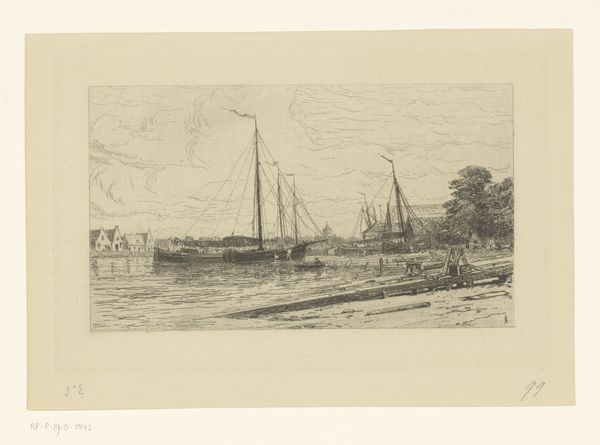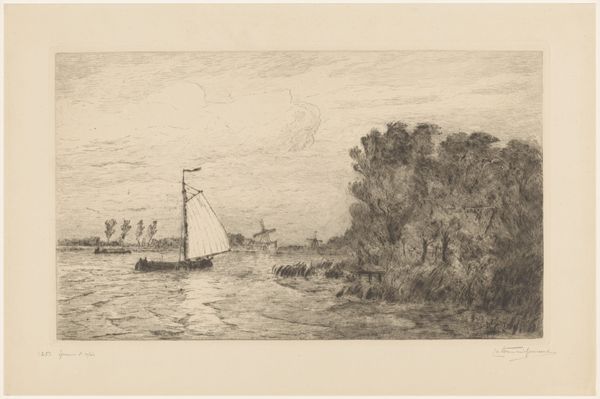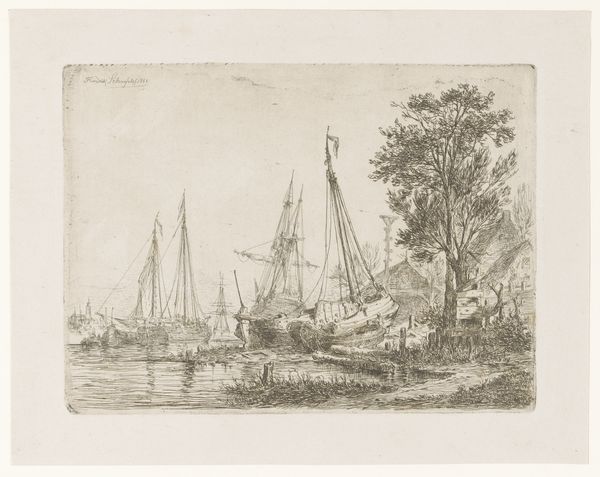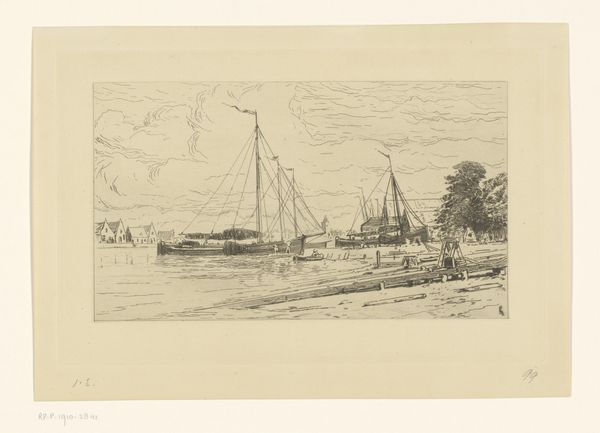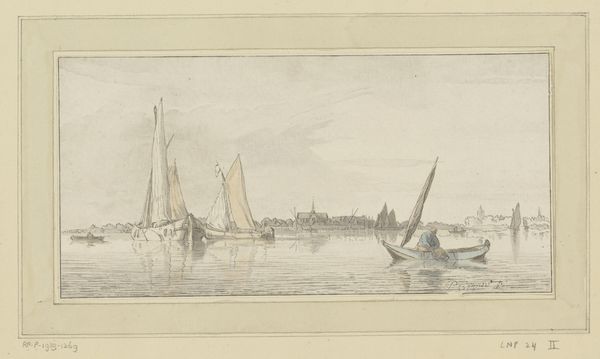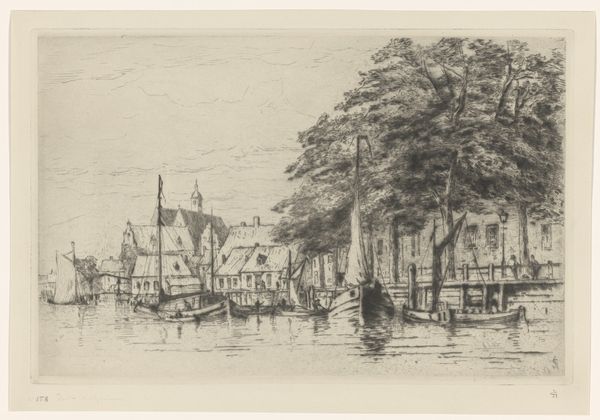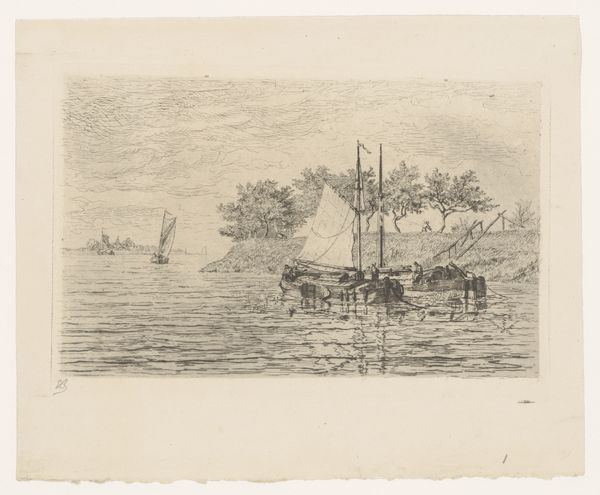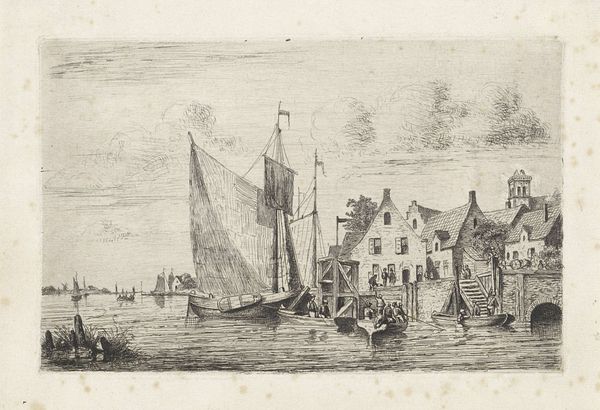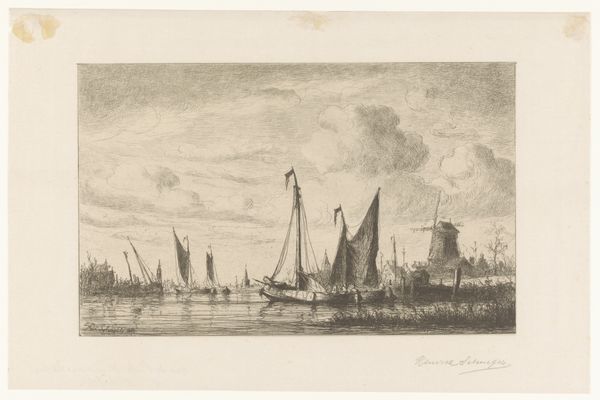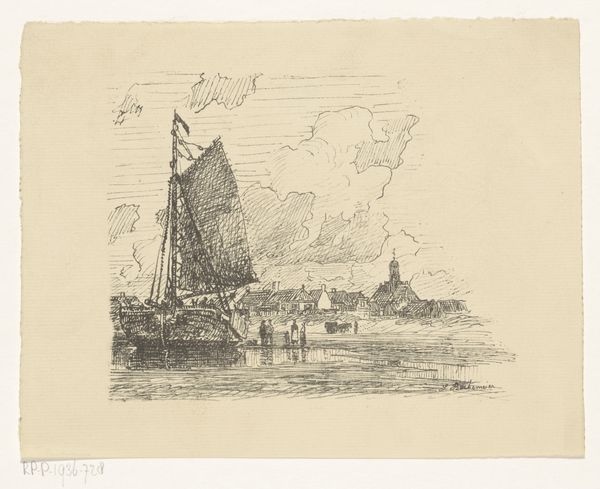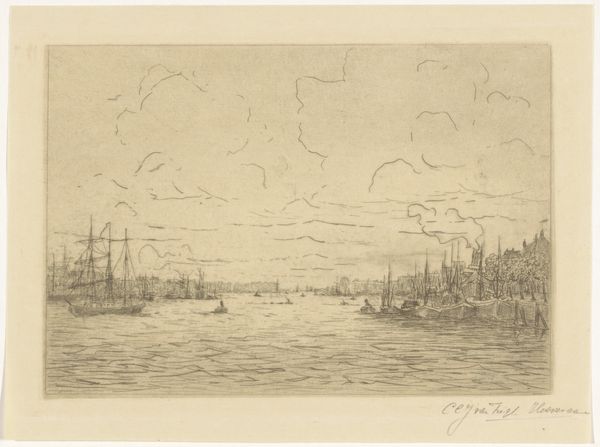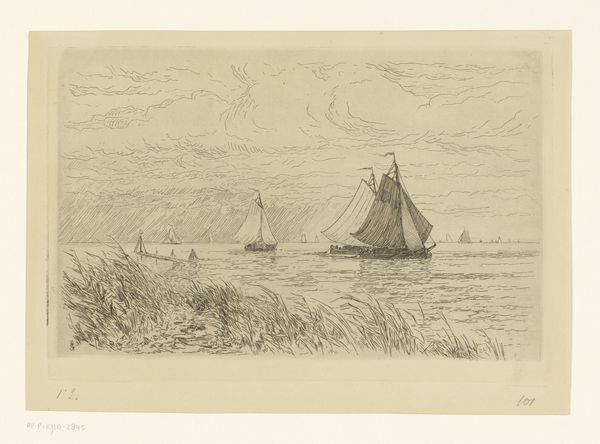
print, etching
# print
#
etching
#
landscape
#
etching
Dimensions: height 208 mm, width 280 mm
Copyright: Rijks Museum: Open Domain
Curator: Up next, we have "Riedijkshaven in Dordrecht," a lovely etching created around 1880 by Carel Nicolaas Storm van 's-Gravesande, part of the Rijksmuseum collection. Editor: Oh, that's so wispy and ethereal. I almost feel like I'm looking at a memory more than a scene. A very serene memory, at that. Curator: I see what you mean. The muted tones, achieved through the etching technique, lend a dreamlike quality. Look at the ships—their masts create a kind of rhythmic pattern, anchoring the composition, don’t you think? Editor: Definitely, like a series of hopeful prayers reaching skyward, but there's also this incredibly comforting solidity about that big old tree. It feels like a silent guardian overlooking the whole harbor, almost like the Hesperides from mythology with their protective role, only...Dutch. Curator: Fascinating. I see it, too, now that you mention it! The etching's detail is subtle, but powerful. Notice how the reflections on the water mimic the shapes of the clouds. It is a nice link between heaven and earth. Perhaps that reflects the hopes and anxieties connected with voyages setting out. Editor: That's lovely! And the little figures on the dock, those almost stick-like forms that remind me of medieval mortality allegories. But there’s no actual tension in their stance—or at least, I don't see it in that way. It almost captures the feeling of just watching time gently go by. It's peaceful. Curator: I’d say it's the way the artist evokes a whole world with a simple line, a delicate web of them even, really speaks to me. You get the smell of the river, the slight salty tang, the murmur of conversation on the quayside, a lot just beneath the surface. It is kind of remarkable when you consider the limits of etching. Editor: Right? It is allusive rather than exhaustive. Maybe I respond to that most of all, the implied story and how much it allows us to add our own chapters to it.
Comments
No comments
Be the first to comment and join the conversation on the ultimate creative platform.
